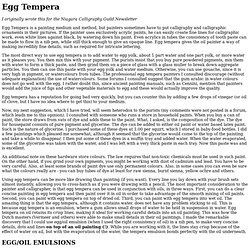

How to Approach Watercolor Painting As a Beginner: 18 steps. Edit Article Edited by Maluniu, Scarlet.pirate, MA, Svenja and 9 others Being a beginner means you need to start somewhere and that's fine; just take it slowly and enjoy your new painting skills!

Water color painting is both enjoyable and a bit frustrating at times. It all depends on how you approach it. It is one of the most versatile mediums to work in. You will have to do a bunch of painting before you feel completely comfortable with the medium. " Let's begin with using watercolors! Ad Steps 1Lay a sheet of heavy paper out on a table. 18Read books and articles on watercolor and try the ideas in them. Video Tips If you use good all-rag watercolor paper like Arches, don't throw out any bad paintings you do. Warnings NEVER leave your brush sitting in the jar of water with its bristles face down. Rose Bouquet Watercolor Painting.
Success Tips for Creating Watercolor Paintings. 7 keys that every successful artist must do is a lesson in creativity, because it’s so hard to break down what an artist does in a step by step outline. But, actually using creativity to define what you do brings clarity. You’re probably wondering exactly what it is that you need to do to assure yourself of creative success as well as how to create successful watercolor paintings. You do need certain tools and skills to accomplish these tasks.
Some expertise is essential for success. Learn to nurture the process of creativity and when to let it rest in your mind until it’s ready to fly free. Watercolor Glazing. Painted by Jim with 50 different glazes You must understand and can control the unique physical characteristics of watercolor to paint with fresh transparent glazes in watercolor.

Here are my thoughts about the subject. Pull up a chair and lets go. First identify what colors on your palette are "transparent". Draw a black horizontal line about an inch in thickness across a small section of your watercolor paper. Remember relative opacity or transparency of colors tends to vary from brand to brand. Now paint a vertical strip of the color you want to examine across the line with a flat brush about 4 inches long. Now look where the vertical and horizontal met. Glazing essentially mixes color in the viewer eye rather than on the palette. For example looking down through a layer of say, New Gamboge over a wash of Thalo Blue, the viewer will see Green, just as if you had mixed the two together, but, giving the viewer a brighter more luminous color than if you had stirred (mixed) them together. Oh! Colour Mixing Tutorial - Watercolours and Pastels by Peter Saw. Characteristics of colours Watercolours have a unique ability to depict atmosphere and light with a magical quality.
To be able to use these qualities to the full, it is necessary to 'get to know' the characteristics of the colours you intend to use. Paint is made from pigments. Some of the pigments occur naturally and some are manufactured synthetically. Transparency In the traditional English style of watercolour, white paint is not used, as the watercolour paper provides the 'white'. Some colours however are not truly transparent due to the nature of the substances (pigments) used in their manufacture.
Colours can be tested easily to show whether they have any opacity, by painting over a dry patch of India Ink. As the colours are generally transparent, when a new colour is painted on top of another (a glaze), the colour underneath will show through the second colour modifying its appearance (see opposite). Staining Some colours have staining properties. Granulation Paint Characteristics. Handprint. Egg Tempera. I originally wrote this for the Niagara Calligraphy Guild Newsletter Egg Tempera is a painting medium and method, but painters sometimes have to put calligraphy and calligraphic ornaments in their pictures.

If the painter uses exclusively acrylic paints, he can easily create fine lines for calligraphic work, even white lines against black, by watering down his paint. Even acrylics in tubes the consistency of tooth paste can be made to flow in a nib pen, while still thick enough to give an opaque line. Egg tempera gives the oil painter a way of making incredibly fine details, such as required for intricate lettering. The most direct way to use egg tempera is to add water to egg yolk, about 1 part water and one part yolk, or more water as it pleases you. Egg tempera has a reputation for going bad very quickly, but you can counter this by adding a few drops of vinegar (or oil of clove, but I have no idea where to get this) to your medium.
An additional note on these hardware store colours. Why Watercolors? Why Not? How to Paint with Watercolors.